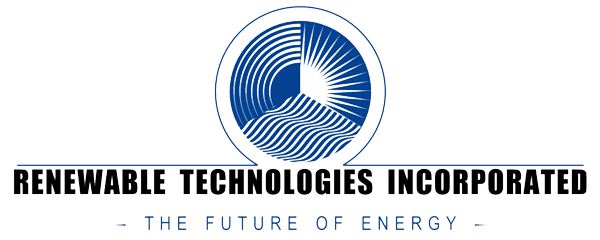Whether you believe in the climate crisis or not, you have to admit that it’s an interesting time to be alive. With so many alternative forms of energy slowly emerging onto the public consciousness, it’s now only a matter of time before business owners ask themselves: is investing in solar energy a smart move?
In this article, we will cover the basic information that you need to know about solar power—what it is, how it works, and when it was “invented.” We will also describe the ways the solar energy is collected as well as the many applications in which it is useful, from agriculture to personal home use. Read on for more things solar!
What Is Solar Power?
Let’s just address the elephant in the room: technically, plants (and bacteria) are solar powered! So since harnessing energy from the sun has been around since the beginning of life as we know it, why should we be interested in solar power now? And what do we mean by “solar power,” anyway?
Utilizing solar power means tapping into energy from the sun and using it to do things like power an AC unit, an outdoor shower, or even a car. Raw solar energy (purely solar exposure) is still used in some places on the planet to do things like crystalize salt, dry and ferment coffee beans, or make concentrated tomato paste…but we’ve come a long way over the past few thousand years with how we interact with the sun.
Today, solar power is thought of as energy that is harnessed from the sun and then converted into electrical or thermal energy. There are several different ways to harness energy from the sun in this century, but perhaps the most frequently talked about is the photovoltaic system, which relies on solar panels and system of batteries for power storage. It should be noted, however, that there are two other ways to capture energy from the sun as well: Solar Heating and Cooling (SHC) or Concentrating Solar Power (CSP) which uses the sun’s heat to power things like electricity-generating turbines, or even a water heater.
When Was Solar Power “Invented?”
While solar power has technically been around since time immemorial, the first person who is credited with “discovering” solar power was a French physicist by the name of A.E. Becquerel in 1839. While his scholarly background was primarily in luminescence and phosphorescence, the 19-year-old found that by submerging platinum or gold plates within a solution and then exposing them to sunlight, he could generate an electric current.
After 1839 came a long line of scientists, physicists, mathematicians, and others at the top of their field working across the globe to perfect the art of harnessing this enduring free resource. After input from none other than Albert Einstein, the first modern solar cell was created in 1954—though it was rather inefficient and costly at the time. It wasn’t until several decades later with the gas crisis that people became interested in “alternative” energy again. (For a more complete history of the evolution of solar power, check out our recent article on the topic!)
How Solar Power Works
Light emitted from the sun (also called electromagnetic radiation) is a type of solar radiation that organisms and plants have been converting into energy since the beginning of life on earth. Since 1839, we’ve discovered a number of ways to harness that energy—but the primary two are photovoltaic technology and Concentrating Solar-thermal Power (CSP).
Photovoltaics (PVs) are perhaps the most commonly recognized, as they come in the form of solar panels which are then hooked up to a battery or series of batteries. When the panels catch electromagnetic radiation emitted from the sun, the light is absorbed by the PV cells which is then transformed into electrical currents responding to the PV cell’s internal electrical field. This is then sent to a battery for storage.
CSP concentrate solar emissions by using a system of mirrors to direct light into receivers which convert the solar energy to heat. This can be used for heating purposes, or to create electricity, though its most common use is in large power plants.
Where Is Solar Power Used?
Solar power is used increasingly across the globe, though it’s top five producing countries are China, the U.S, Japan, India, and Germany, in that order. China is far out in front at harnessing 32% of the world’s solar energy, whereas the U.S. comes in at 16%. Within the United States, the top two solar electricity generating states are California and Texas, averaging between 10.0-40.0 billion kilowatt hours per year. This energy is collected on a large utility scale and then distributed accordingly. Other states that are large producers of solar energy include Nevada, Arizona, Florida, and North Carolina.
Solar power is often used in residential settings, such as to power the electricity of the house or heat a water tank. However, there are other applications in which solar power is a good investment. In the following section, we take a look at three of the emerging fields in which investing in solar power can be beneficial.
Agricultural Settings
Anywhere you have crops you intend to grow, you likely have open space and access to sunlight. This has inspired the genesis of a solar-inspired farming setup, called agrivoltaics (or dual-use solar). In this model, farmers or cattle-raisers incorporate rows of solar panels into their fields, either for the crops to grow under or for the cows to graze beside. This has twofold benefits: the first is that this provides the farmer or rancher with guaranteed income, no matter what kind of yield they have for the year. This can allow everything from expansion to improving the quality of their product by allowing them the financial freedom to make changes. The second benefit is that crops (and grass) are more likely to retain moisture if they are partially shaded during the day. This means less irrigation is necessary, and it may even save money and resources for the average farmer or rancher. (For more on agrivoltaics, check out this article from the NRDC!)
Industrial Settings
Another great application of solar energy lies in industrial practices, whether that be chemical production, water desalination, mineral processing, or any other number of industrial endeavors. Concentrating Solar Power (CSP) is particularly beneficial in industrial applications because it concentrates the heat generated by the sun and either transforms it into energy or keeps it in thermal storage. CSP heat energy can be moderated at a broad spectrum of temperatures, making it ideal for everything from inciting chemical reactions to producing food.
As of 2019, industrial uses made up 32% of all American energy consumption—so converting a business to CSP or photovoltaics could help offset carbon emissions and potentially even mean a tax write off. In fact, the U.S. Department of Energy’s Solar Energy Technologies Office (SETO) plans to create a zero-carbon energy sector within the next thirty years.
Commercial Settings
The United States (and much of the western world) is fueled by capitalism, and the U.S. alone consumes 19% of the world’s commercial energy use each year. Investing in solar energy is not only likely to lower utility bills in the long term, but may even provide carbon credits or tax breaks for the business. Solar power can be used to do so much more than just generate electricity—it can be used for ventilation purposes by creating solar attic fans, heating homes or water tanks, and even charging cell phones. The United States has already released a solar-powered car, that can even be charged by using a regular electrical outlet. Imagine, a fleet of company vehicles that charge naturally in the sun, subverting the cost and carbon emissions of traditional gas while progressing your company into the future and potential financial incentives…
You might be surprised at how many big-name brands have already switched exclusively to solar power. Some names you might recognize include Target, Macy’s, Ikea, Apple, and Intel. These corporate leaders are paving the way for growing businesses to make the switch to solar, in accordance with SETO’s plans to have a carbon-free energy sector by 2050—and many corporations are following suit.
Solar Contractor Near Me
There are nearly 3 million homes in the United States today that rely exclusively on solar power. Each year, the number of American households expected to install solar panels increases by a whopping 32%. Each day, the infrastructure of how we gain, harness, and distribute our energy is changing—and solar power is a large part of working towards a healthier planet and a brighter future.
You don’t have to believe in climate change to see the benefits of tapping into a free, abundant resource that is the basis for life on earth; photosynthesis has been creating energy for billions of years, all at no cost to the organism.
Are you ready to look for a solar contractor “near me”? Contact Renewable Technologies, Inc. today for a quote, or check out other Frequently Asked Questions folks have about solar energy!

